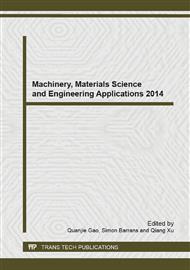p.52
p.59
p.65
p.69
p.74
p.81
p.86
p.91
p.95
The Influence of Friction Coefficient on Tenon/Groove Contact Performance in Nickel-Based Turbine Blade-Disc
Abstract:
This paper presented the influence of crystallographic orientation and friction coefficient on the contact stress and fatigue life in the tenon/groove contact region. A rate-dependent crystallographic plastic slip theory was used to calculate the contact stress and fatigue life in [001], [011] and [111] orientations. In the calculation, complex loading conditions and different friction coefficients of 0, 0.2, 0.4, 0.6, 0.8 and 1.0 were taken into account in tenon/groove. Then the relationship between contact stress, fatigue life and friction coefficient was discussed. Simulation results show that: friction coefficient and crystallographic orientation have significant effect on contact stress and fatigue life. Contact stress in [001], [011] and [111] orientation increases with increasing friction coefficient generally. For [001] and [011] orientation, the fatigue life decreases with increasing friction coefficient firstly. When friction coefficient is 0.4, the fatigue life meets its minimum. Then the fatigue life will increase with increasing friction coefficient. For [111] orientation, the change of fatigue life has no obvious trend, and while friction coefficient exceeds 0.6, the life almost constant.
Info:
Periodical:
Pages:
74-80
Citation:
Online since:
June 2014
Authors:
Price:
Сopyright:
© 2014 Trans Tech Publications Ltd. All Rights Reserved
Share:
Citation:


